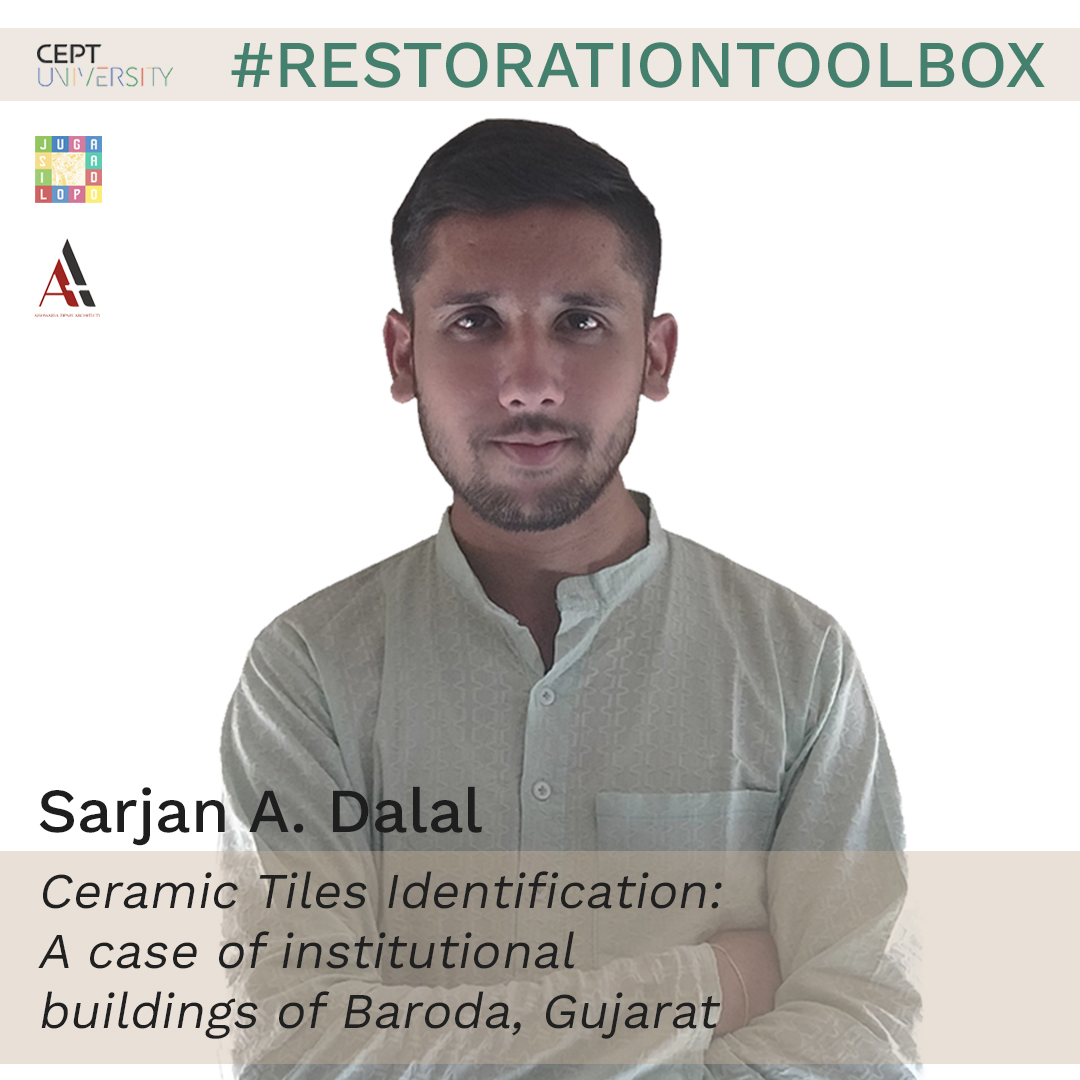Sarjan Dalal

This study mainly focuses on creating a user-friendly, practical, and cost-effective toolbox. It broadly
caters to identifying symptoms, defects, causes, viable suggestions for on-ground treatments, and
solutions for ceramic tiles as an aesthetic building material. It aims to be a guide while providing a
resource map of material, artisans, and agencies for heritage practitioners and owners of heritage
properties to interpreting the use of the heritage tiles.
It addresses all the layers, such as the historical background of the material, understanding of the
material, manufacturing processes throughout the world, techniques used for cleaning, reviving,
repairing, replacing, and conserving the tile as a building finish material, before suggesting appropriate
guidelines for the same.
This toolbox states simple ways to repair and maintain heritage tiles within PWD’s budget for the building.
This toolbox is a pilot study to fill the gap of how public institutes take care of these heritage tiles in their
regular system. In institutional building, vulnerability is high because one is dealing with PWD institutions
that lack heritage expertise and understandings. That is why the study focus to be simple to understand
and to be user friendly for PWD as well as for other stakeholders.
To learn from the best practices and understand tiles’ history and applications as a building material in
India, the study emphasizes the princely state Baroda. It further identifies and examines the floor and
wall tiles of public and institutional buildings constructed during the 19th century and built by famous
architects and Gaekwads, patrons of Baroda State. The study restricts its investigation to particular three
public buildings: the Baroda State library known as Jaisinghrao Gaekwad public library at Kothi
compound, the Baroda College known as MSU Arts Faculty, the faculty of Education and Psychology,
and experimental high school at MSU campus. All three buildings are built in the Indo-Saracenic style of
architecture.
Lastly, the study depicts and describes suggesting guidelines for anyone and everyone to understand
ceramic tiles thoroughly. The study acts as a catalyst in deciding appropriate methods and techniques to
be used throughout all the stages of conservation practice and planning a particular project.
The framework and methodology are created for the study and understanding of 19th-century ceramic
floor and wall tiles. This framework and methodology are designed and conceptualized to be easily used,
adopted, and apply to any other historic and traditional building materials. With aiming of what to use,
how to use, and where to find material, technique, and craftsmanship for conserving, reviving, and
restoring them for their more extended use